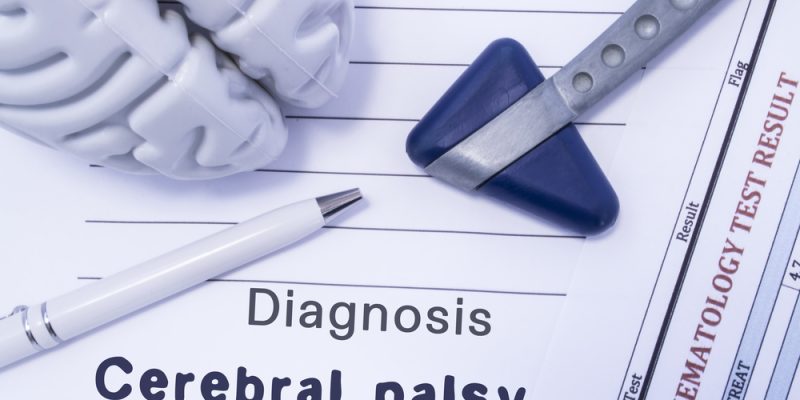Common Motor Milestones and Delays
Identifying cerebral palsy early often hinges on the observation of motor milestones and their potential delays. Infants typically follow a predictable pattern of motor development, which includes rolling over, sitting up, standing, and walking. A delay in reaching these milestones can be an early indicator of cerebral palsy or other developmental disorders.
- By the age of 6 months, infants usually begin to roll over and control their head movements.
- Sitting without support is expected by 9 months of age.
- By 12 months, many infants start to stand with assistance, progressing to walking independently by 18 months.
When these milestones are not met within the expected time frames, it may prompt further investigation. Healthcare providers often rely on the Cerebral Palsy Guide for comprehensive information on cerebral palsy, including potential causes and treatments. It is crucial for parents and caregivers to monitor these developmental stages closely and report any concerns to their pediatrician, as early detection and intervention can significantly improve outcomes.
Visual and Auditory Indicators
Children with cerebral palsy may exhibit distinct visual and auditory indicators that can signal the need for further evaluation. Visual symptoms often include difficulties with tracking moving objects or maintaining eye contact. Some children may also display an abnormal eye movement known as strabismus, where the eyes do not properly align with each other.
Auditory indicators can be more subtle but are equally important. These may include a lack of response to auditory stimuli or delays in the development of language and communication skills. It is crucial for parents and healthcare providers to be aware of these signs as they can be early indicators of cerebral palsy or other neurological conditions.
- Difficulty with tracking moving objects
- Inability to maintain eye contact
- Abnormal eye movement (strabismus)
- Lack of response to sounds
- Delayed language and communication development
Behavioral and Cognitive Clues
In the journey to diagnose cerebral palsy early, behavioral and cognitive clues can be pivotal. These signs often manifest subtly and may be overlooked without careful observation. Parents and caregivers are usually the first to notice unusual patterns in a child’s behavior or cognitive development.
Key indicators include:
- Difficulty with problem-solving or logical thinking tasks
- Challenges in focusing attention or following simple commands
- Unusual responses to sensory stimuli, such as touch or sound
- Delays in speech development or difficulty in forming words
These behavioral and cognitive signs may suggest that a child’s brain is developing differently. It is crucial to document these observations and share them with healthcare professionals during routine checkups. Early identification of such clues can lead to timely referrals for further assessment and support, paving the way for a more accurate diagnosis and effective intervention strategies.
The Role of Screening and Routine Checkups
Pediatric Screening Guidelines
Pediatric screening guidelines are a critical component in the early detection of cerebral palsy. These guidelines provide a framework for healthcare professionals to follow, ensuring that children are monitored for developmental milestones at appropriate intervals.
- Birth to 2 years: During this period, screenings are typically conducted at each well-child visit. Healthcare providers assess the infant’s reflexes, muscle tone, and posture, which are crucial indicators of typical development or potential concerns.
- 2 to 5 years: As children grow, screenings become more focused on motor skills, coordination, and speech. Delays in walking, difficulty with fine motor tasks, or challenges in communication may prompt further evaluation.
Adherence to these guidelines is essential for early intervention, which can significantly improve outcomes for children with cerebral palsy. Parents and caregivers play a vital role in this process, as they are often the first to notice subtle signs that may not be apparent during a routine checkup.
Developmental Surveillance and Screening Tests
Developmental surveillance and screening tests are critical components in the early detection of cerebral palsy. These tests are designed to systematically monitor a child’s growth and development over time. Pediatricians and healthcare providers use a variety of tools and checklists to assess developmental milestones during routine checkups.
- Developmental Surveillance involves the ongoing collection of detailed information about a child’s motor, cognitive, and emotional development. It is a continuous process that allows for the early identification of potential developmental issues.
- Screening Tests are more formal evaluations that are typically administered at specific ages to detect developmental delays or abnormalities. These may include the Ages and Stages Questionnaires (ASQ), the Denver Developmental Screening Test (DDST), and the Bayley Scales of Infant Development.
The results from these assessments can help guide further diagnostic evaluations if there are concerns about a child’s development. It is important for parents to be actively involved in this process, as they are often the first to notice subtle changes or delays in their child’s development. Early detection through these methods is key to providing timely interventions that can significantly improve outcomes for children with cerebral palsy.
Importance of Parental Observations and Reporting
Parents and caregivers play a crucial role in the early detection of cerebral palsy. Their unique perspective on a child’s day-to-day abilities and behaviors provides invaluable insights that may not be as apparent during routine checkups. It is essential for parents to monitor and report any concerns they have about their child’s development to healthcare professionals.
Key observations to report include:
- Unusual patterns of movement or muscle tone, such as stiffness or floppiness
- Delays in reaching developmental milestones, like crawling or walking
- Difficulties with feeding, swallowing, or speech
- Asymmetrical use of limbs or favoring one side of the body
By maintaining open communication with pediatricians and other healthcare providers, parents can ensure that any potential signs of cerebral palsy are addressed promptly. This collaborative effort can lead to earlier interventions and better outcomes for the child.
Diagnostic Evaluations and Assessments
Neurological Examination and History
The journey towards a cerebral palsy diagnosis often involves a thorough neurological examination. This critical step assesses the child’s nervous system functionality and identifies potential impairments. The examination includes evaluating the child’s muscle tone, reflexes, and motor coordination. A detailed history is also taken, considering prenatal, perinatal, and postnatal events that could have affected the child’s brain development.
Key components of the neurological history include:
- The mother’s health during pregnancy
- Complications during labor and delivery
- The child’s milestones and developmental progress
- Any instances of seizures or abnormal movements
Understanding the child’s history helps in distinguishing cerebral palsy from other neurological disorders. It is also during this stage that healthcare professionals might encounter indications of preventable birth injuries, which could lead to discussions about medical negligence and the need for a confidential case evaluation.
Imaging Techniques: MRI and Ultrasound
Imaging techniques such as Magnetic Resonance Imaging (MRI) and ultrasound play a crucial role in the diagnostic process for cerebral palsy. These non-invasive tools provide detailed images of the brain’s structure, helping to identify abnormalities that may indicate cerebral palsy.
- MRI: This imaging modality offers high-resolution images and is particularly useful for detecting brain malformations, white matter injury, or any other cerebral anomalies. It is often considered the gold standard in cerebral imaging for cerebral palsy diagnosis.
- Ultrasound: Primarily used in infants, especially those born prematurely, cranial ultrasound is a convenient and less expensive option. It can detect brain abnormalities, including hemorrhages and lesions, which are risk factors for developing cerebral palsy.
While these imaging techniques are powerful, they must be interpreted within the context of the child’s medical history and other findings. A normal imaging result does not rule out cerebral palsy, and conversely, not all abnormalities on an MRI or ultrasound will lead to a diagnosis of cerebral palsy. Therefore, these tools are part of a comprehensive assessment that includes clinical evaluations and may also involve additional tests.
Physical and Occupational Therapy Assessments
Physical and occupational therapy assessments are critical in the diagnostic process for cerebral palsy. These evaluations focus on the child’s motor skills, muscle tone, coordination, and overall physical abilities. Therapists use a variety of tools and techniques to measure the child’s developmental progress and identify areas of concern.
- Motor Skills Evaluation: Therapists assess the child’s gross and fine motor skills, comparing them to typical developmental milestones.
- Muscle Tone and Strength: Observations and tests are conducted to evaluate muscle tone, strength, and reflexes, which are often affected in cerebral palsy.
- Functional Assessment: The child’s ability to perform daily activities is reviewed to determine the impact of their physical limitations.
The insights gained from these assessments inform the treatment plan and can guide interventions to improve the child’s quality of life. Moreover, they provide a comprehensive understanding of the child’s abilities, which is essential for setting realistic goals and expectations. It is important to note that these assessments should be part of an ongoing process, as the child’s needs may change over time.
Interdisciplinary Approach to Diagnosis
Collaboration Among Healthcare Professionals
The diagnosis of cerebral palsy is a complex process that benefits greatly from a collaborative approach among various healthcare professionals. This interdisciplinary team typically includes pediatricians, neurologists, physical therapists, occupational therapists, speech-language pathologists, and sometimes psychologists or psychiatrists. Each professional brings a unique perspective and set of skills to the table, ensuring a comprehensive evaluation of the child’s condition.
Key aspects of this collaboration include:
- Communication: Regular and clear communication between team members is essential for sharing observations, test results, and treatment responses.
- Coordinated Care: A coordinated care plan helps to streamline the diagnostic process, reduce redundancies, and ensure that all aspects of the child’s development are addressed.
- Family Involvement: Families play a critical role in the diagnostic process, and their insights are invaluable. Healthcare professionals should work closely with family members to gather a complete picture of the child’s abilities and challenges.
- Continuity of Care: As the child grows, the team must adapt the diagnostic and intervention strategies to meet changing needs, ensuring continuity of care throughout development.
This interdisciplinary approach not only aids in the accurate diagnosis of cerebral palsy but also sets the stage for effective early intervention, which can significantly improve outcomes for affected children.
Integrating Medical, Developmental, and Family Histories
The integration of medical, developmental, and family histories is a critical step in the diagnostic process for cerebral palsy. This comprehensive approach ensures that healthcare professionals consider all potential factors that could contribute to a child’s condition. By examining a child’s medical history, doctors can identify any prenatal, perinatal, or postnatal events that may have affected brain development. Developmental history provides insight into the child’s growth and developmental milestones, highlighting any deviations from typical patterns.
Family history, on the other hand, can reveal genetic or hereditary conditions that might be relevant to the child’s diagnosis. It is not uncommon for certain neurological disorders to have a genetic component, making it essential to understand the family’s health background. The following points illustrate the importance of this integrated approach:
- A thorough review of the child’s medical records can uncover early signs of brain injury or developmental issues.
- Developmental history offers a timeline of the child’s motor skills, speech, and social interactions, which are often affected in cerebral palsy.
- Family history can indicate a predisposition to certain conditions, informing the diagnostic process and potential management strategies.
By synthesizing information from these three key areas, healthcare providers can form a more accurate and complete picture of the child’s health, leading to a more precise diagnosis and tailored intervention plan.
The Role of Early Intervention Services
Early intervention services play a crucial role in the diagnosis and management of cerebral palsy. These services are designed to support children and their families from the earliest stages of development, often before a formal diagnosis is made.
Key components of early intervention include:
- Individualized therapy plans that address specific developmental needs.
- Support for families to understand and navigate the child’s condition.
- Coordination of care among various healthcare providers.
By engaging with early intervention services, children with cerebral palsy can receive timely and appropriate therapies that may improve their long-term outcomes. These services also provide a framework for ongoing assessment, which can be critical in identifying cerebral palsy as early as possible. Moreover, early intervention can help in establishing a supportive network for the child and family, fostering an environment that promotes optimal development and quality of life.
Challenges and Considerations in Early Diagnosis
Differentiating Cerebral Palsy from Similar Disorders
Accurately diagnosing cerebral palsy (CP) can be challenging due to its symptomatic similarities with other developmental disorders. Early and precise diagnosis is crucial for effective intervention and management. To distinguish CP from other conditions, healthcare professionals must carefully consider a variety of factors:
- Clinical Presentation: While CP is primarily characterized by motor function impairment, disorders such as muscular dystrophy or genetic syndromes may present with similar motor symptoms. Detailed observation of the child’s movement patterns and muscle tone can provide valuable insights.
- Developmental History: A thorough review of the child’s developmental milestones can help differentiate CP from developmental delays caused by other factors. CP typically involves a non-progressive disturbance in the developing brain, whereas other conditions may show a progressive or fluctuating course.
- Associated Conditions: CP often coexists with other medical issues such as intellectual disabilities or seizures. However, the presence of certain metabolic or genetic abnormalities may suggest an alternative diagnosis.
- Response to Therapy: Children with CP may respond differently to physical and occupational therapy compared to those with similar disorders. Monitoring the child’s progress over time can aid in confirming the diagnosis.
Healthcare providers may employ a combination of clinical assessments, medical history, and diagnostic tests to ensure an accurate diagnosis. It is essential to approach each case individually, considering the unique aspects of the child’s symptoms and health history.
The Impact of Prematurity and Low Birth Weight
Infants born prematurely or with low birth weight face a higher risk of developing cerebral palsy. The delicate development of the brain can be disrupted by the challenges that arise from early birth and insufficient weight gain. These challenges include a heightened vulnerability to infections, breathing difficulties, and issues with feeding that can affect brain development.
Key factors linking prematurity and low birth weight to cerebral palsy include:
- Incomplete brain development in premature infants, which can lead to motor function impairments.
- A greater likelihood of intraventricular hemorrhage (bleeding in the brain), which is more common in low birth weight and premature babies.
- Potential for periventricular leukomalacia (PVL), a form of white-matter brain injury, which is a significant risk factor for cerebral palsy.
Early identification and intervention are crucial for infants at risk. Healthcare providers often monitor these infants closely for any signs of developmental delays or neurological issues. Parents and caregivers play a vital role in observing and reporting any concerns during the child’s growth, as early therapy and support can significantly improve outcomes.
Cultural and Socioeconomic Factors Affecting Diagnosis
The diagnosis of cerebral palsy can be significantly influenced by cultural and socioeconomic factors. These elements shape parental awareness, access to healthcare services, and the ability to seek timely medical advice. In some cultures, there may be stigma or lack of knowledge about developmental disorders, which can delay the recognition of early signs and prompt intervention.
- Awareness and Education: In communities where education about developmental disorders is limited, parents might not recognize the early signs of cerebral palsy or understand the importance of early diagnosis.
- Healthcare Access: Socioeconomic status often dictates the quality and frequency of healthcare, affecting the likelihood of early detection and diagnosis.
- Stigma and Beliefs: Cultural beliefs and stigmas can prevent families from seeking help or acknowledging the symptoms of cerebral palsy, leading to underdiagnosis or misdiagnosis.
It is crucial for healthcare systems to address these disparities by providing accessible information and support to all families, regardless of cultural or economic background. This includes offering translation services, culturally sensitive educational materials, and outreach programs to underserved communities. By doing so, the barriers to early diagnosis of cerebral palsy can be reduced, ensuring that all children have the opportunity to receive the care and interventions they need.












Comments